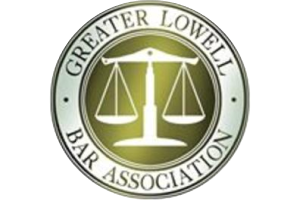- Contact Us Now: (978) 458-1229 Tap Here To Call Us
Snow and Ice Injuries
In Part 1, we discussed the duty owed by property owners in terms of snow and ice removal. In this post, we will discuss what happens if you are injured after slipping on ice or snow. It is important to know what steps are available to you and what, if any, fault you may have in the matter. As noted in the previous post, it used to be much harder to recover damages from a slip and fall caused by snow and ice. A 2010 Supreme Judicial Court (“SJC”) case (Papadopoulos v. Target Corp) overturned an over-a-century-old law regarding the accumulation of snow. The duty placed on property owners was raised and it became easier to prove negligence. However, just because it became “easier,” does not mean collecting damages will be easy. There are still multiple factors at play. All slip and fall cases fall under a class of personal injury claims requiring you to prove negligence. You must establish a duty, a failure to meet that duty, injuries, and that the breach of duty caused those injuries. In a case of snow and ice-induced slip and fall case, the duty owed is by the landowner and he or she owes you “reasonable care” for a safe walking environment, that is, free of ice and snow. Further, you must suffer a significant injury, for example, sprained or broken bones or traumatic brain injury from hitting your head. Finally, you need to establish that the ice was the cause of your slip and fall. There are some additional nuances unique to ice and snow slip and falls that are important to know. Like most personal injury claims, slip and fall accidents have a three-year statute of limitations. However, for snow and ice slip and fall cases, the injured person must notify the property owner within thirty (30) days of their fall that you were injured on their property. This requirement serves two (2) functions. One is to give the property owner notice of a possible pending lawsuit. Next, it protects you from a property owner claiming they were not aware anyone was ever injured on their property. If you fail to provide this timely notice, you will be unable to file a claim. Another potential hurdle in your claim is the legal principle known as “comparative negligence.” Comparative negligence assesses a percentage of fault on both the injured party and the property owner, that is, you both share the blame. While the property owner is responsible for removing ice and snow, when walking on a slippery surface, you too have a duty to exercise reasonable care to avoid getting hurt. By way of example, assume you break your leg after slipping on ice in front of a restaurant. Lets further assume that the restaurant owners failed to “reasonably” de-ice the sidewalk. However, it was shown that you were walking and texting on your phone when you fell. While it is the restaurant owners’ “fault” for not removing the ice, the fact that you were not paying attention to where you were going can place some of the blame on you. In this instance, a court could find that while the restaurant owners’ were at fault, so too were you. Under comparative negligence, they can assign a percentage to you (you are 25% at fault) and the restaurant owners (they were 75% at fault). This means any damages you receive will be reduced by 25% (your percentage of fault). This is important to know, because under comparative negligence laws in Massachusetts, the plaintiff can only be compensated if their share of the blame is less than 51%. (A 2020 SJC case dealt, in part, with the issue of comparative negligence. You can read the full description of this case in a prior blog post here). As if this did not all seem daunting enough, oftentimes, and especially when businesses are responsible, insurance companies get involved. These cases are very fact-specific, and what constitutes “reasonable” snow and ice removal or treatment is often at issue. Therefore, insurance companies try to place blame on the accident victim for the fall. By now, it should be clear that there are a lot of moving parts when it comes to establishing your slip and fall case. It is in your best interest to work with an experienced personal injury attorney to help you navigate through this process.












